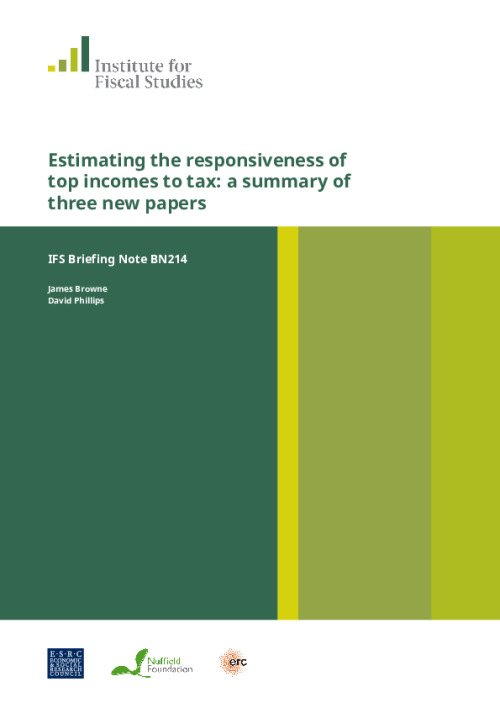In 2010, an ‘additional’ 50% rate of income tax applying to incomes above £150,000 was introduced. Following HMRC analysis of the responses of high-income individuals to this new tax rate in the first year of its operation, the Chancellor announced in Budget 2012 that the tax rate would be reduced to 45% from April 2013. The IFS has now published three working papers that look at the behavioural responses to the 50% tax rate in more detail, including examining responses in the second year of the 50% tax rate (2011–12). As well as this historical episode being of interest in its own right, such analysis can help inform ongoing debates about taxation of high income individuals.
The introduction of the 50% income tax rate in April 2010 was well publicised in advance, having been announced in March 2009. This gave those affected the opportunity to avoid having to pay the 50% tax rate in the first year by bringing their income forward to the 2009–10 tax year. It seems clear from the data that many of these individuals took advantage of this opportunity, artificially increasing their incomes in the year prior to the tax rate being increased, leading to a big reduction below their normal levels the following year. We call this phenomenon ‘forestalling’. If the 50% tax rate had remained in place for the long term, this forestalling would have unwound, leading to the reported incomes of this group returning to more normal levels. Separating the impact of this forestalling from the underlying impact of the 50% tax rate – which weakens the incentives individuals face to earn more and increases the pay-off to income shifting to other tax bases (such as capital gains) and other forms of tax avoidance or even evasion – is one of the key challenges faced in this analysis.











